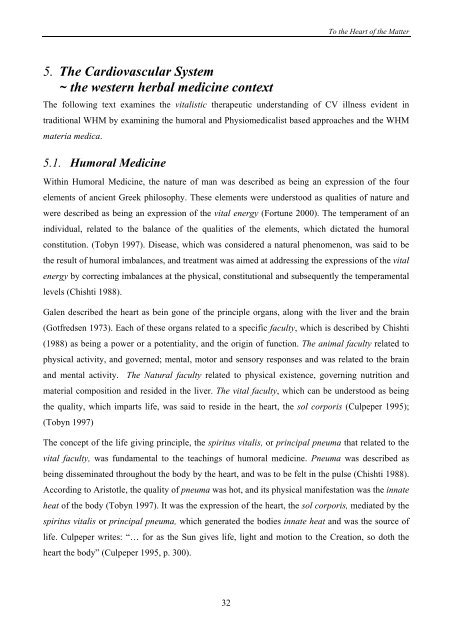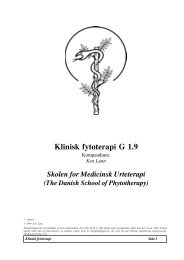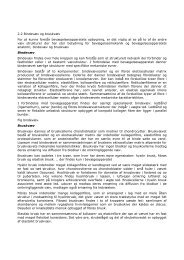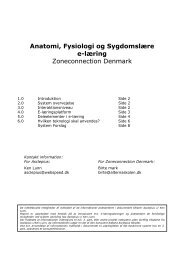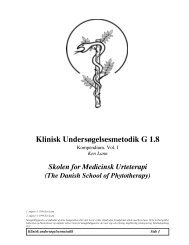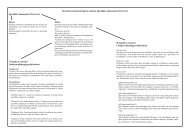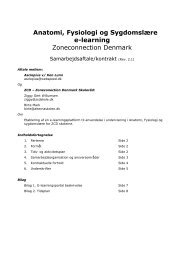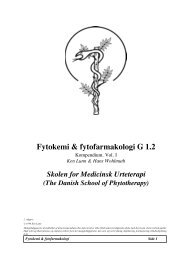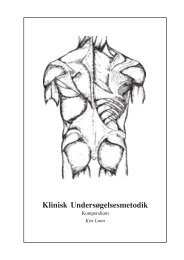PDF File - Asclepius Herbal Consultancy
PDF File - Asclepius Herbal Consultancy
PDF File - Asclepius Herbal Consultancy
Create successful ePaper yourself
Turn your PDF publications into a flip-book with our unique Google optimized e-Paper software.
5. The Cardiovascular System<br />
~ the western herbal medicine context<br />
To the Heart of the Matter<br />
The following text examines the vitalistic therapeutic understanding of CV illness evident in<br />
traditional WHM by examining the humoral and Physiomedicalist based approaches and the WHM<br />
materia medica.<br />
5.1. Humoral Medicine<br />
Within Humoral Medicine, the nature of man was described as being an expression of the four<br />
elements of ancient Greek philosophy. These elements were understood as qualities of nature and<br />
were described as being an expression of the vital energy (Fortune 2000). The temperament of an<br />
individual, related to the balance of the qualities of the elements, which dictated the humoral<br />
constitution. (Tobyn 1997). Disease, which was considered a natural phenomenon, was said to be<br />
the result of humoral imbalances, and treatment was aimed at addressing the expressions of the vital<br />
energy by correcting imbalances at the physical, constitutional and subsequently the temperamental<br />
levels (Chishti 1988).<br />
Galen described the heart as bein gone of the principle organs, along with the liver and the brain<br />
(Gotfredsen 1973). Each of these organs related to a specific faculty, which is described by Chishti<br />
(1988) as being a power or a potentiality, and the origin of function. The animal faculty related to<br />
physical activity, and governed; mental, motor and sensory responses and was related to the brain<br />
and mental activity. The Natural faculty related to physical existence, governing nutrition and<br />
material composition and resided in the liver. The vital faculty, which can be understood as being<br />
the quality, which imparts life, was said to reside in the heart, the sol corporis (Culpeper 1995);<br />
(Tobyn 1997)<br />
The concept of the life giving principle, the spiritus vitalis, or principal pneuma that related to the<br />
vital faculty, was fundamental to the teachings of humoral medicine. Pneuma was described as<br />
being disseminated throughout the body by the heart, and was to be felt in the pulse (Chishti 1988).<br />
According to Aristotle, the quality of pneuma was hot, and its physical manifestation was the innate<br />
heat of the body (Tobyn 1997). It was the expression of the heart, the sol corporis, mediated by the<br />
spiritus vitalis or principal pneuma, which generated the bodies innate heat and was the source of<br />
life. Culpeper writes: “… for as the Sun gives life, light and motion to the Creation, so doth the<br />
heart the body” (Culpeper 1995, p. 300).<br />
32


